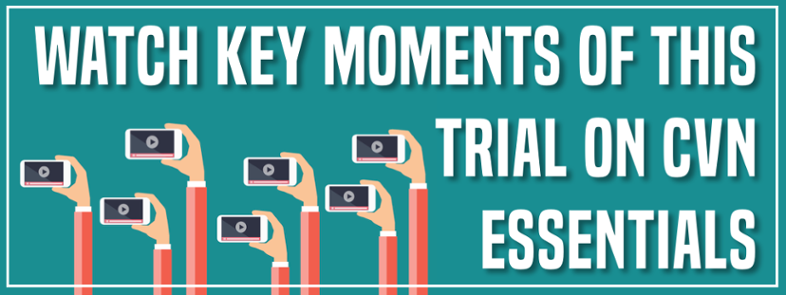In some trials, an attorney’s opening or closing statement or the examination of a key witness makes the difference in the jury’s ultimate verdict. In the recent Fulton County Superior Court case of Dina Andrews v. Percy Bady (2013CV230964), however, a decision by Judge Robert McBurney on the admissibility of one document under the new Georgia Evidence Code may well have been the deciding factor.
 The defendant in the case, Percy Bady, is a nationally known singer/songwriter/producer who was sued by his former manager, Dina Andrews, for breach of their management contract. Although Bady acknowledged at trial that he owed Andrews money under the contract, Andrews’ attorney, Kelli Hooper, faced a difficult task in proving the total amount of damages owed her client.
The defendant in the case, Percy Bady, is a nationally known singer/songwriter/producer who was sued by his former manager, Dina Andrews, for breach of their management contract. Although Bady acknowledged at trial that he owed Andrews money under the contract, Andrews’ attorney, Kelli Hooper, faced a difficult task in proving the total amount of damages owed her client.
 Under the terms of the contract, Andrews was perpetually entitled to 20 percent of the royalties Bady receives on certain songs. At the trial, Bady disputed just which songs were subject to the contract. Further, his attorney, Mario Breedlove, reminded the jury that, as plaintiff, Andrews had the burden of proving each song that was covered under the contract and the amount of damages owed.
Under the terms of the contract, Andrews was perpetually entitled to 20 percent of the royalties Bady receives on certain songs. At the trial, Bady disputed just which songs were subject to the contract. Further, his attorney, Mario Breedlove, reminded the jury that, as plaintiff, Andrews had the burden of proving each song that was covered under the contract and the amount of damages owed.
Bady has been a prolific composer who now receives royalties on hundreds of songs that he wrote or contributed to during his 30-year career. However, only some of those songs were subject to the contract with Andrews, and, in many cases, he receives only a few dollars—and in some cases a few cents—per year on each song. Further, Bady did not produce any of his business records prior to the trial, claiming that they had been destroyed in a flood at his offices years previously.
To prove her client’s case, Hooper obtained over 3,000 pages of records from the various organizations that have paid Bady royalties. These records indicated the total royalties they paid Bady for all of his songs. Then, Hooper and Andrews determined which songs they believed were covered and the amount of royalties paid Bady each year since 2007 on those songs (due to the statute of limitations, Andrews could only receive a percentage of Bady’s royalties from 2007 forward). According to their calculations, Andrews was entitled to receive over $70,000 as her share of Bady’s royalties.
Hooper still needed to present this evidence to the jury in a manner that they could follow. To do so, she and Andrews compiled an Excel spreadsheet listing all the songs they believed were covered under the contract, the royalties paid to Bady on each song, and the amount due Andrews under their theory of the case. By reviewing the spreadsheet, the jury could verify the amount of damages owed.
Hooper then moved to admit the spreadsheet into evidence under O.C.G.A § 24-10-1006, part of the 2013 Georgia Evidence Code. That statute now expressly allows, under certain conditions, “the contents of otherwise admissible voluminous writings …which cannot conveniently be examined in court [to] be presented in the form of a chart, summary, or calculation.” Specifically, the statute requires that “the originals, or duplicates [of the underlying documents] shall be made available for examination or copying, or both, by other parties at a reasonable time and place.”
Bady’s attorney, Mario Breedlove, objected to the admission of the spreadsheet, which was presented to the defense for the first time at trial. He noted that Andrews had received the underlying records months earlier but had not provided the spreadsheet in response to an interrogatory asking for a detailed itemization of damages.
Breedlove also contended that the statute did not apply to plaintiff’s spreadsheet because the document was more than a mere summary. “This is a calculation of numbers, whether they’re accurate or not, we don’t know, derived allegedly with the assistance of a forensic accountant who hasn’t testified; I think it’s more than a summary…. This information has been available to the plaintiff for many months and it is unfair for me not to have seen this document to be able to cross-examine the witness as to the content after reviewing the records that are calculated within the document.”
Hooper responded that at the time Andrews replied to the interrogatories, they had not received the various documents from the companies paying Bady royalties and that, as they received those documents, they notified the defense. Further, in her view, the spreadsheet was admissible under the statue because the underlying records were certainly voluminous and the calculations performed in the spreadsheet were nothing more than simple mathematics. “It would be a disservice to the jury to send them back there with 3,000 pages of documents and a calculator and assume that they could … come up with anything in a reasonable period of time.”
After hearing the arguments from both attorneys, Judge McBurney admitted the spreadsheet into evidence. In his view, although plaintiff could have presented the spreadsheet earlier, the defense had the underlying records for the same length of time as did plaintiff. In the judge’s opinion, the dispute between the parties centered on which songs were or were not subject to the contract, and the defense could have performed its own set of calculations. The spreadsheet itself was not creative but mechanistic. Also, the calculations involved were not complex mathematics, possibly requiring expert testimony, but repetitive mathematics. For these reasons, the judge ruled that the spreadsheet qualified as a summary under O.C.G.A. § 24-10-1006.
The jury eventually ruled in favor of plaintiff, and the spreadsheet may well have played a role in the jury’s verdict. They awarded Andrews over $70,000 in damages plus attorney’s fees for a total verdict of $120,000.
CVN’s earlier articles about the case can be found here and here. Steve Silver can be contacted at ssilver@cvn.com.
Not a Subscriber?
Learn more about CVN's unparalleled coverage of top Georgia trials.




